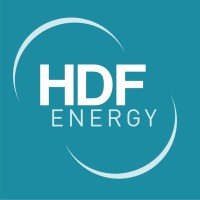The Philippines hydrogen economy: offshore wind turbines is an option

Since joining the Paris climate agreement, the Philippines has been progressing towards clean energy, though albeit at a slow pace. However, the country aims to reduce greenhouse gas emissions by around 70% by 2030. The Philippines is among the countries facing extreme weather conditions and, in recent years, hit by deadly typhoons.
The archipelago is heavily dependent on imported fossil fuel, and thermal energy accounts for around 76% of the national energy mix. Coal, one of the cheapest options to produce power, accounts for over half of the Philippines energy. In October 2020, the government announced to ban all the new proposals for coal power plants. The country is inclining towards clean energy, where wind energy is expected to see strong potential growth in the future. In addition, the Philippines has also set sight on using hydrogen as a fuel.
Hydrogen potential as energy has been under discussion in the country. In 2018, the National Electrification Administration (NEA) and Toshiba Energy Systems & Solutions Corporation signed a memorandum of understanding (MoU) for the construction of H2One as a source to generate power. H2One is a solution to produce hydrogen through electrolysing using renewable energy and then use it in fuel cells as a power source. Both organisations agreed to conduct the feasibility study for the location, system operation and maintenance. However, it seems that the agreement has yet to see a further progression.
“We continue to study for installing the CO2 free hydrogen energy system for remote islands,” Toshiba Energy Systems & Solutions Corporation told H2Bulletin.
Early this year, the Philippines Department of Energy and Star Scientific Ltd agreed to explore opportunities to convert the coal-based power plants to green hydrogen by using Star Scientific’s Hero® system. H2Bulletin asked Andrew Horvath, Global Group Chairman Star Scientific, about the technology and the MoU.
Hero® is a unique catalyst that is usually applied to a substrate in the form of a coating. When introduced to hydrogen and oxygen in a closed environment, the catalyst acts quickly to generate industrial-scale heat. The heat is then transferred, primarily via conduction, through the substrate. “We believe that the Philippines will likely be the first place that Hero® will be used for power station conversions on a commercial scale. Industrial heat applications are likely to happen first in Australia,” Mr Horvath said.
Under the MoU, the Star Group will assist the DoE with the development and implementation of funding models to attract global financing for the different aspects of all the projects as they develop.
The Philippines relies largely on energy imports. The fact that the country does not have vast native energy reserves implies that it is more open to a rapid transition, unlike Australia, which has many vested interests involved in fossil fuel exports. “Another unique opportunity is the large amounts of deep ocean wind reserves available that we will investigate in the first stage of this MoU,” he highlighted.
“Our Swiss investment arm, Plant Power Finance, will develop funding models that will help attract international investment to support the creation of a hydrogen economy,” he added. We are confident that we will enable the Philippines to take this critical step to achieve energy independence while reducing the country’s emissions.
Star Scientific said that it is committed to using green hydrogen, “we expect that the bulk of our green hydrogen for this project will be produced by electrolysers powered by floating offshore wind turbines.”
However, there are some upside and downside risks to developing the hydrogen-based fuel industry in the country. A considerable advantage is that 50% of the Philippines’ population are under 25, and there is a strong political will amongst them to achieve zero-emissions.
He said, “Transitioning the power supply of 100 million residents from fossil fuels to renewable energy is a huge task, and we are prepared for many challenges along the way. We will work closely with all stakeholders to ensure the best outcome for the Philippines.”
